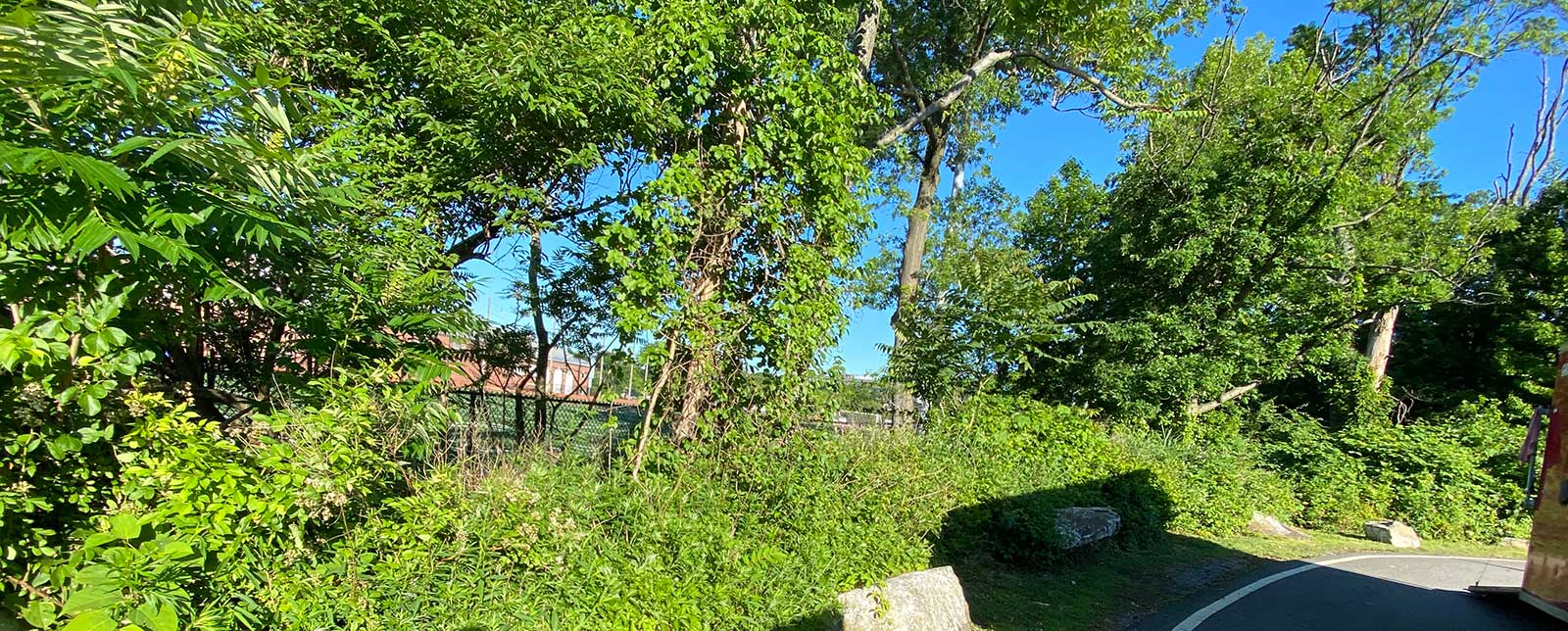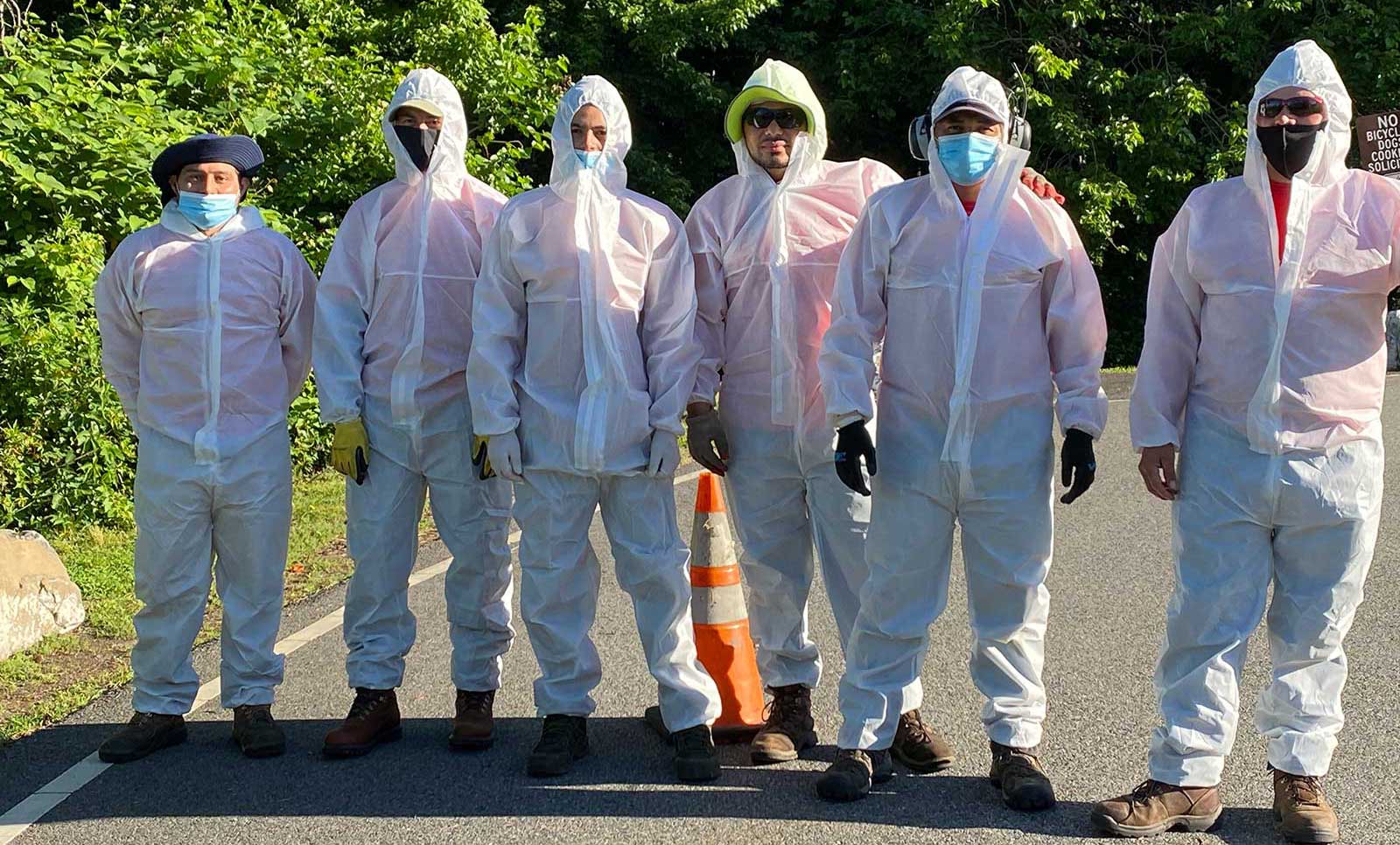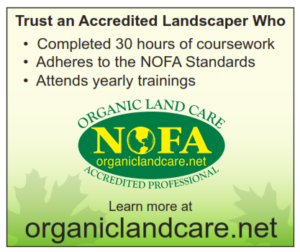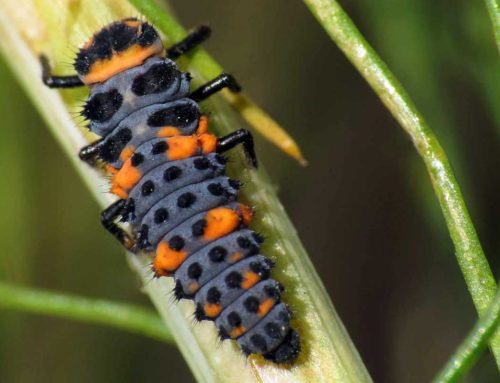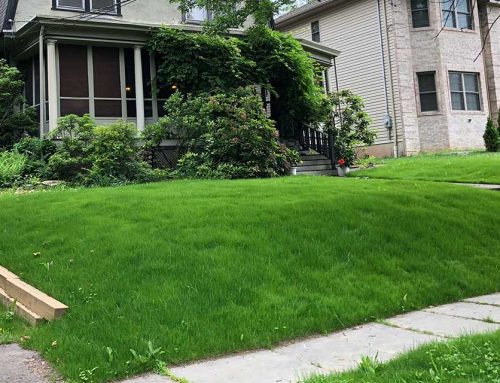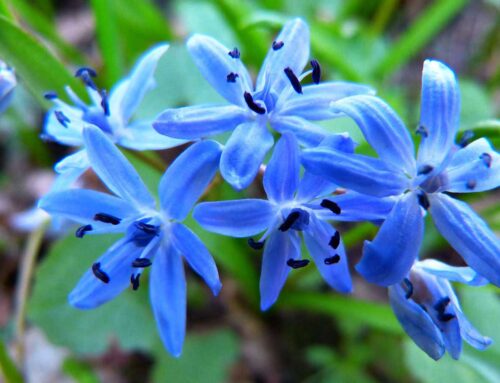Poison Ivy Eradication
Pesticide Free Municipal School Property Maintenance
We had the good fortune of being contracted to remove a massive growth of poison ivy. Growing to a height of 8 to 10 ft with trailers climbing tress up to 35 or 40 feet, it was growing alongside a small stream bed/culvert area which led to its spread to a nearby athletic playing field. Always putting the safety of our employees first, we purchased Tyvek suits and special gloves. Those suits combined with a specialized poison ivy oil (tecnu) that protected the skin of our fearless warriors, we worked for 11 hours to completely remove every bit of poison ivy from the school.
We knocked down the lower plant growth with hedge trimmers and removed it from the property. We also removed the growth off of the trees entirely. We then sprayed the entire growth area with a 200 grain Horticultural vinegar (A Liquid herbicide for non-selective vegetation control containing concentrated acetic acid) – a benefit of which is phytotoxicity. 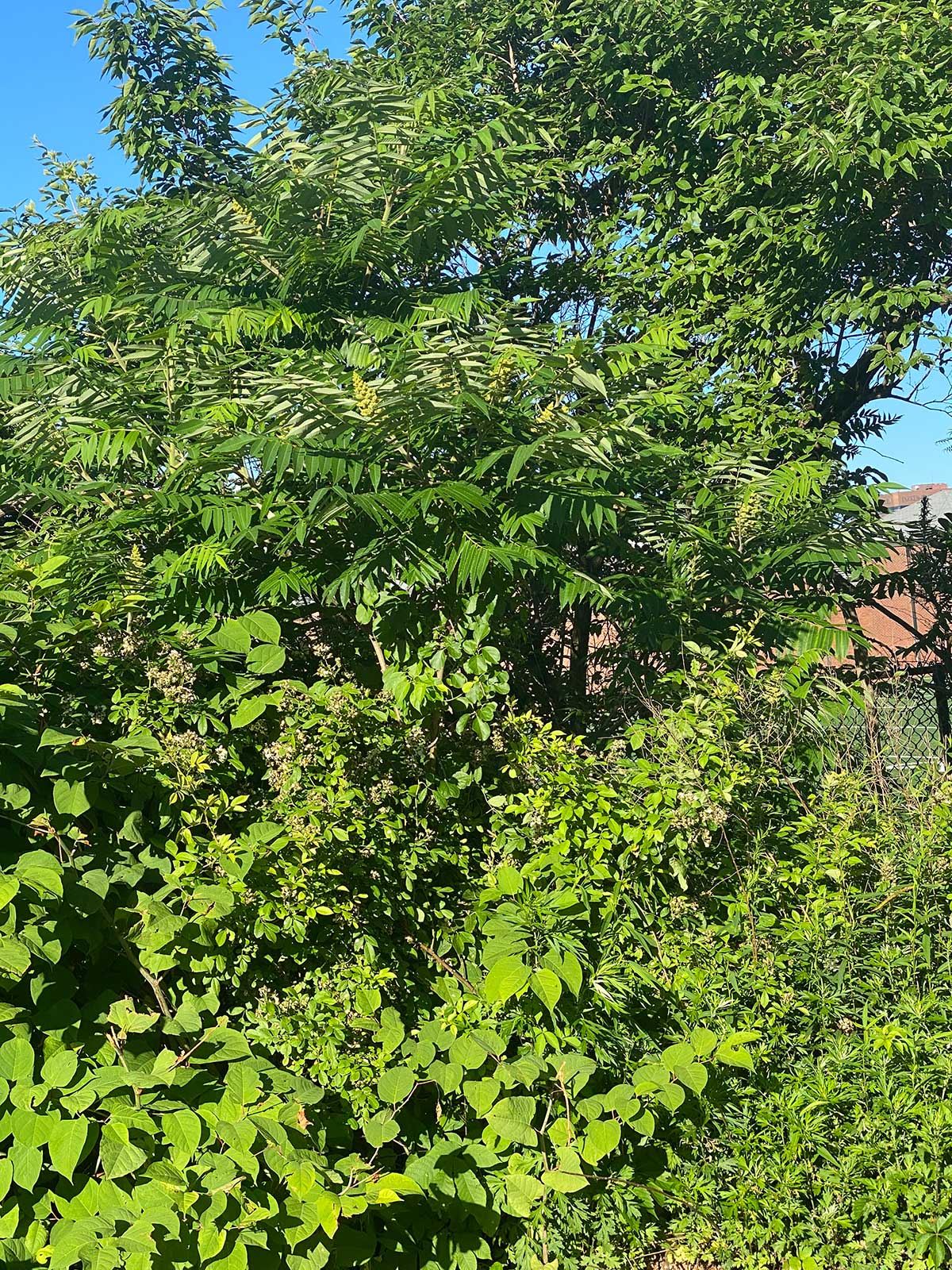 Phytotoxicity is defined as a delay of seed germination, inhibition of plant growth or any adverse effect on plants caused by specific substances (phytotoxins) or growing conditions.
Phytotoxicity is defined as a delay of seed germination, inhibition of plant growth or any adverse effect on plants caused by specific substances (phytotoxins) or growing conditions.
The most common poisonous plants are:
Poison Ivy
Poison Oak
Poison Sumac
All of these plants contain a liquid sap called urushiol which causes a severe allergic reaction in most humans. Either direct contact with plants containing this substance or contact with animals or surfaces that have been exposed can cause a red, itchy rash and be hard to get rid of. The more often you are exposed, the more severe your reaction will be.
Poison ivy and poison oak sometimes share one similarity in appearance. Their leaves tend to grow in clusters of three, and you can remember this with the adage “Leaves of three, let it be!” This is a good basic rule, but be advised it is not entirely foolproof. The number of leaves per cluster may vary depending upon the species of poison oak or ivy. There is, even more, variation when it comes to poison sumac. Its leaves grow in a feather-like formation in varying numbers ranging from seven to thirteen per grouping.
No job is impossible for Lincoln Landscaping.
Need some help implementing or getting started with organic lawn and gardening? Give us a shout and we can help you. At Lincoln Landscaping cultivating the environment is our life and livelihood. It is our number one goal to help our clients create and maintain beautiful landscapes while reducing the impact on the environment. Whether you are interested in a pollinator landscape garden design and build or other landscaping or property management project; we can create for you an environmentally friendly, organic and beautiful property.
Together with you, we create sustainable Eco-Systems. As the Navajo Indians would say “Yua Tah Hey”
Lincoln Landscaping “The Natural Choice”
Mike Kolenut President & CEO
https://lincolnlandscapinginc.com
(201) 848-9699

